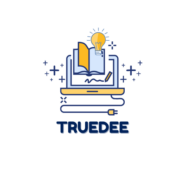Navigating K-12 education in New York can feel like a maze. With its diverse landscape of public, private, and charter schools, parents and students face a myriad of choices that can significantly impact a child’s academic journey. As someone who’s delved into this complex system, I understand the challenges and opportunities that come with it. From the bustling classrooms in Manhattan to the quieter districts upstate, the educational experience varies widely. Understanding the unique features of New York’s K-12 system is essential for making informed decisions. Whether you’re a parent seeking the best fit for your child or an educator looking to enhance your approach, this exploration of K-12 education in New York will equip you with the insights you need to thrive.
- Diverse Educational Options: New York’s K-12 education system includes over 700 public school districts, numerous charter schools, and around 1,200 private institutions, offering families various choices tailored to different student needs.
- Curriculum Standards: New York adheres to Next Generation Learning Standards, focusing on core subjects while integrating social-emotional learning, emphasizing the importance of both academic and personal development.
- Funding Disparities: Funding issues create significant disparities across public school districts, affecting resources, technology access, and educational equity, particularly in low-income neighborhoods.
- Innovative Approaches: Schools in New York are increasingly adopting technology integration and innovative programs that enhance personalized learning experiences and foster community engagement.
- Focus on Equity: Efforts are being made to address educational equity, ensuring that all students—regardless of race, socioeconomic status, or language proficiency—have equal opportunities in the K-12 system.
- Future Trends: Emerging trends like personalized learning, community partnerships, and an emphasis on STEM education signal a progressive shift toward a more inclusive and adaptive educational landscape in New York.
K-12 Education New York
K-12 education in New York encompasses a wide range of schools and programs designed to cater to diverse student needs. New York State offers over 700 public school districts, numerous charter schools, and various private institutions, providing families with multifaceted educational choices. Public schools serve approximately 2.5 million students, making them a pivotal part of the education system.
New York’s public school system is governed by the State Education Department, which establishes curriculum standards, administers statewide assessments, and ensures compliance with federal and state regulations. The curriculum aims to meet Next Generation Learning Standards, which include core subjects such as English, mathematics, science, and social studies. As of 2023, a focus on social-emotional learning and inclusivity has gained traction, preparing students for academic and personal success.
Charter schools offer an alternative to traditional public education. About 300 charter schools exist, serving roughly 150,000 students across the state. These schools receive public funding but operate independently, allowing for unique curricula and teaching methods. Charter school performance varies, with some schools demonstrating higher student achievement levels compared to their district counterparts.
Private schools in New York provide additional educational options. Approximately 1,200 private schools serve about 250,000 students. Parents select these institutions for their distinctive educational philosophies, smaller class sizes, or specialized programs. Many private schools offer financial aid to families, making them accessible to diverse socioeconomic groups.
Understanding the educational landscape in New York requires navigating a complex system. Factors such as school funding, curriculum choices, and student support services play crucial roles in shaping educational experiences. As families engage with the K-12 education system, researching options and visiting schools can help make informed decisions that align with their children’s needs and aspirations.
Key Features of K-12 Education in New York
K-12 education in New York boasts several key features that shape the learning experience. Understanding these elements helps parents, educators, and students navigate the system effectively.
Curriculum Standards
New York’s K-12 curriculum adheres to the Next Generation Learning Standards. These standards encompass subjects such as English Language Arts, Mathematics, Science, and Social Studies. The curriculum emphasizes critical thinking and problem-solving skills alongside core academic knowledge. Moreover, schools increasingly incorporate social-emotional learning, promoting mental well-being and inclusivity. Diverse educational offerings, including Advanced Placement (AP) courses and International Baccalaureate (IB) programs, provide students with opportunities to earn college credit while still in high school.
Assessment and Accountability
Assessment in New York’s K-12 system involves various standardized tests, including the New York State Regents Examinations and English Language Arts and Mathematics assessments. These tests play a pivotal role in measuring student learning and school performance. Schools receive accountability ratings based on these assessments, informing stakeholders about educational effectiveness. Additionally, federal and state regulations mandate regular evaluations, ensuring that all students, including those in special education and English Language Learner programs, receive appropriate support.
Challenges Facing K-12 Education in New York
K-12 education in New York faces significant challenges that impact students, educators, and families. Addressing these issues requires a comprehensive understanding of the current landscape.
Funding Issues
Funding issues significantly affect schools across New York. Many public school districts struggle to maintain adequate resources due to disparities in local property taxes. Schools in affluent areas often receive more funding than those in lower-income neighborhoods, creating an uneven playing field. According to the New York State Education Department, the average per-pupil spending in 2020 was approximately $26,000, but this number varied greatly among districts. Such inconsistencies lead to inequitable access to technology, extracurricular programs, and support services. Additionally, persistent budget cuts hamper efforts to hire and retain qualified teachers, reduce class sizes, and implement advanced educational programs.
Educational Equity
Educational equity remains a critical challenge in New York’s K-12 system. Factors such as race, socioeconomic status, and language proficiency can affect a student’s educational experience and outcomes. Data from the New York State Attorney General’s Office indicates that Black and Hispanic students are significantly underrepresented in gifted and talented programs, while also facing higher suspension rates. Addressing these disparities is crucial for ensuring all students receive an equal opportunity to succeed. The state has introduced initiatives aimed at promoting diversity and inclusion within schools, yet progress is slow and uneven. Schools must prioritize resources and support to create a more equitable system for every student, regardless of their background.
Innovative Programs and Initiatives
New York’s K-12 education system embraces innovative programs and initiatives that enhance learning experiences for students. These advancements focus on technology integration and community engagement, essential for fostering a supportive educational environment.
Technology Integration
Technology integration into classrooms revolutionizes learning in New York schools. Schools adopt digital learning tools, such as interactive whiteboards and educational software, to enhance engagement and foster collaboration. Programs like the Digital Equity Initiative strive to ensure equitable access to devices and internet connectivity, particularly in underserved communities. Over 50% of public schools now use online platforms for course materials, assessments, and communication. Coding and STEM programs introduce students to vital skills, preparing them for future careers in technology. Initiatives incorporating virtual reality (VR) and augmented reality (AR) provide immersive learning experiences in subjects like history and science, capturing student interest and improving comprehension.
Community Engagement
Community engagement initiatives strengthen the connection between schools and families in New York. Schools implement programs that encourage parental involvement, such as workshops and information sessions that educate families about academic standards and resources. Partnerships with local organizations, like libraries and cultural institutions, enhance learning opportunities outside the classroom. Many schools encourage students to participate in community service projects, promoting social responsibility and teamwork. Engagement metrics indicate that schools prioritizing community connections experience improved student attendance and graduation rates, showcasing the significant impact of these initiatives on overall educational success.
Future of K-12 Education in New York
Emerging trends in K-12 education in New York signal significant changes on the horizon. Increased focus on personalized learning approaches aims to cater to students’ individual needs, promoting engagement and academic success. Schools are implementing adaptive learning technologies that tailor educational experiences based on each student’s strengths and weaknesses.
Furthermore, integration of social-emotional learning in the curriculum continues gaining traction. Schools recognize the importance of students’ mental well-being, fostering resilience and emotional intelligence alongside academic knowledge. This holistic focus prepares students for life beyond the classroom by equipping them with essential life skills.
Collaboration between schools and technological companies is expected to accelerate, enhancing curriculum delivery through innovative platforms. A growing emphasis on STEM education and coding initiatives prepares students for careers in rapidly evolving job markets. Schools increasingly emphasize critical thinking, creativity, and collaboration skills, ensuring students remain competitive.
Community partnerships also play a vital role in shaping the future of K-12 education. Local organizations and businesses contribute resources and mentorship, enriching educational experiences. These collaborations often result in internships and hands-on learning opportunities, providing students with real-world experiences that bridge the gap between school and career pathways.
Lastly, policy changes focusing on equity will impact funding and resource allocation. Efforts to address disparities in educational access seek to create a more balanced system, ensuring all students receive quality education regardless of their socioeconomic background. Initiatives aimed at increasing diversity in classrooms and programs are also being prioritized, ultimately leading to a richer, more inclusive educational landscape for New York’s students.
Navigating K-12 education in New York can feel overwhelming but it’s also filled with opportunities. The diverse options available empower families to choose what best suits their children’s needs. As I’ve explored this landscape, I’ve seen firsthand how innovation and community engagement can transform educational experiences.
While challenges like funding disparities and educational equity persist, there’s a growing commitment to address these issues. The focus on personalized learning and social-emotional development signals a positive shift toward a more inclusive system. By staying informed and actively participating in our children’s education, we can help shape a brighter future for all students in New York.

